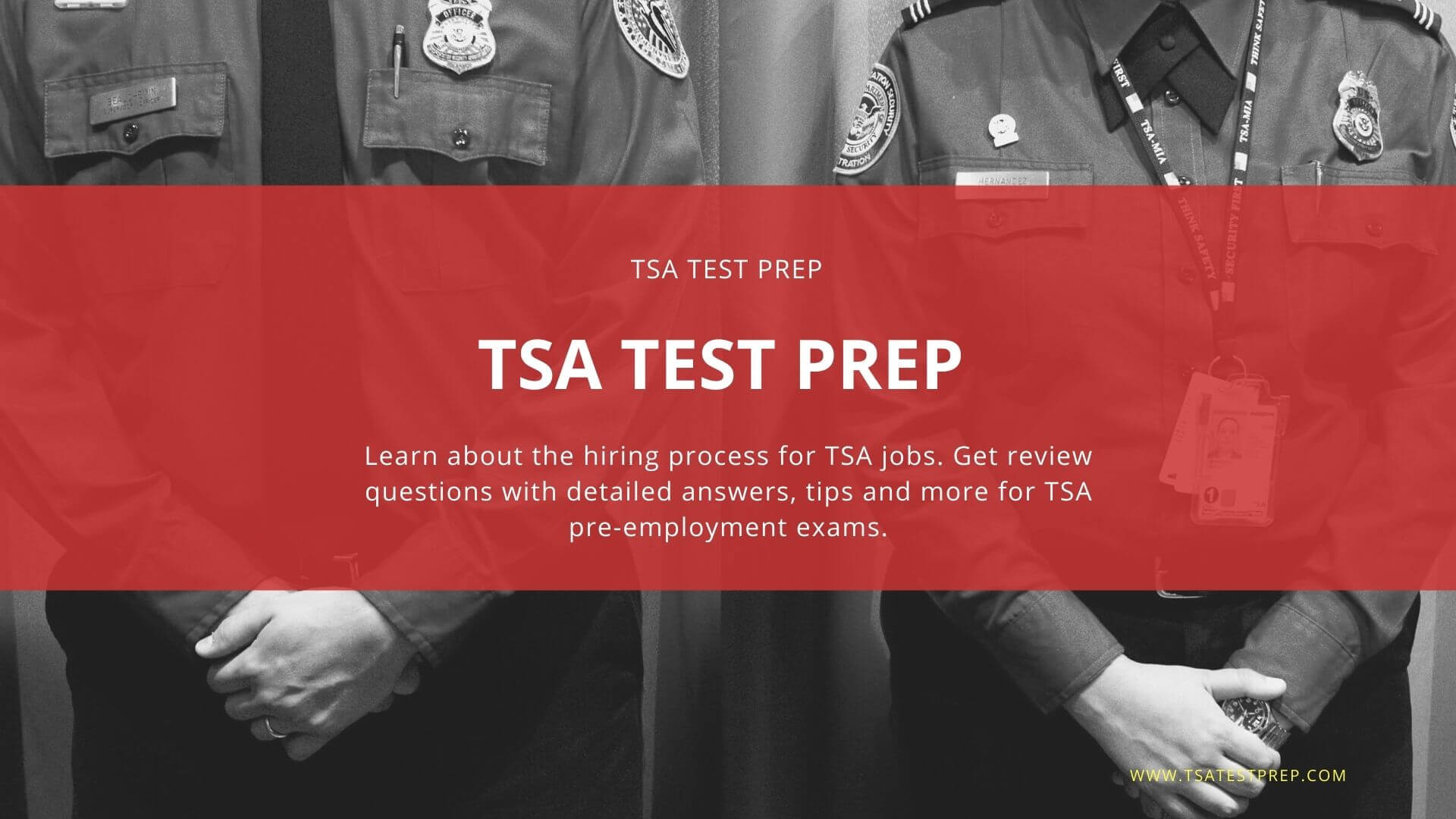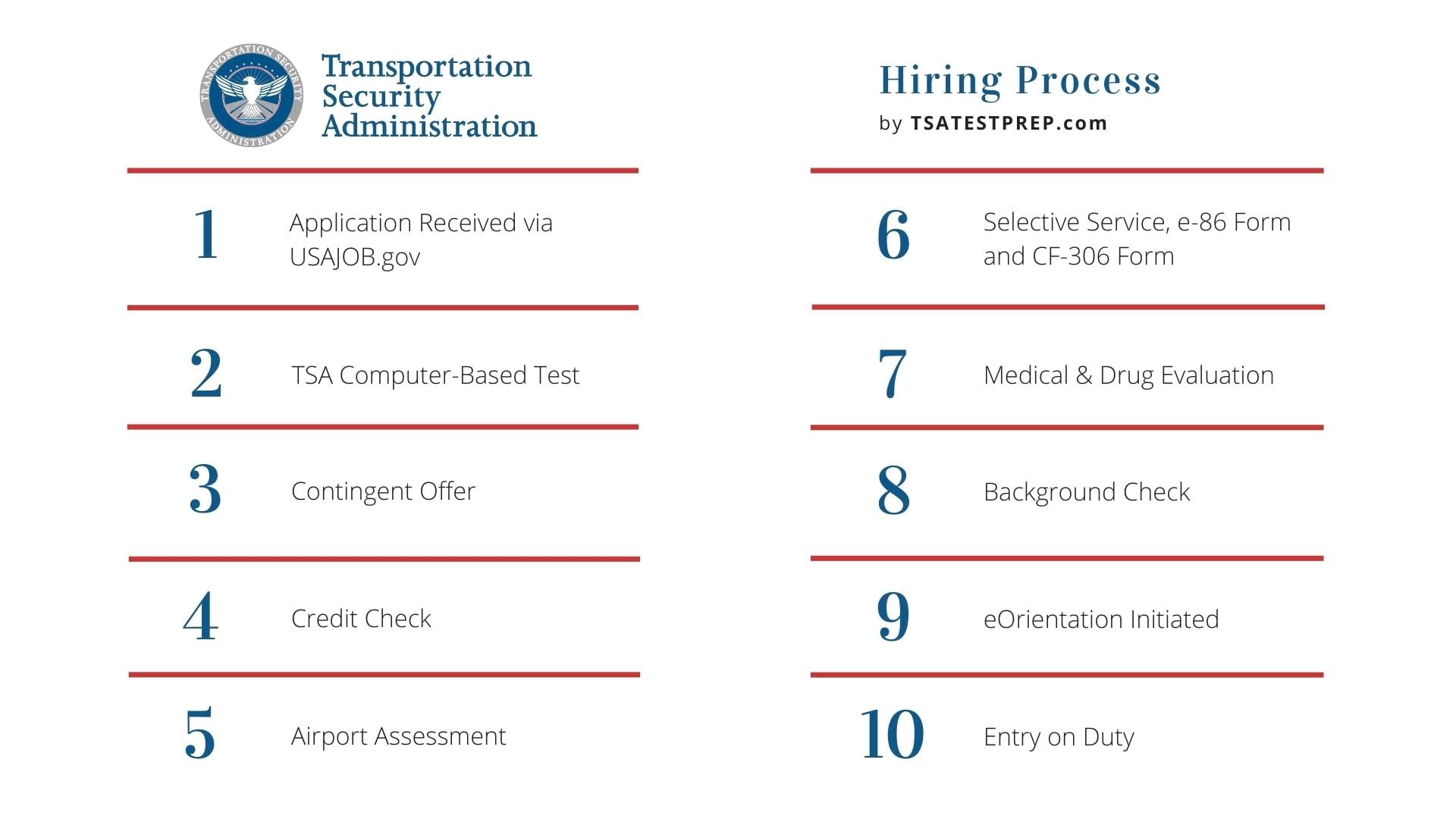
About TSA Test Prep
This site covers everything you need to know about landing a great career with the Transportation Security Administration. Learn about the organization, the different jobs you can have, the application process, and how to excel on the TSA CBT exams. We are here to give you helpful tips, sample test questions, study guides and more.
What Is the Transportation Security Administration?
Following the events of the September 11th attack, where almost 3,000 individuals lost their lives, the Transportation Security Administration (TSA) was created. The purpose of the TSA is to ensure that similar organized attacks against the nation’s transportation system will be prevented in the future. Currently, there are thousands of employees dedicated to the safety of the transportation system, while enabling the free movement of individuals and business.

The History of the Transportation Security Administration
September 2001
The September 11th attack occurred. Four U.S. planes were hijacked and they crashed into the World Trade Center, Pentagon, and Philadelphia. This was the deadliest terror attack to occur in the United States.
November 2001
In November 2001 after the unfortunate events of September 11th the Aviation and Transportation Security Act was signed. This law requires federal officials to conduct screening of all baggage. It expanded the existing Federal Air Marshal Service and required all cockpit doors to be reinforced.
The TSA is officially created and in charge of the security for all transportation modalities.
December 2001
The shoe bomber, Richard Reid, attempts to ignite a bomb in his shoes on a flight from Paris to Miami.
December 2002
Explosive Detection Systems are deployed across the nation. Now all bags are screened through these designated machines.
April 2003
The Federal Flight Deck Officer Program is launched. The TSA starts training flight deck officers to carry firearms on deck. Pilot are now armed on commercial flights. In this same month cockpits are reinforced to protect against explosives.
December 2005
As a result of the Madrid train bombing prevention and response is expanded for rail and mass transit transportation.
August 2006
TSA bans all liquids, gels, and aerosols on carry on luggage in response to a terrorist plot to detonate liquid explosives. A month later the rule is modified to the 3-1-1 liquid rule. Allowing liquids in containers of 3.4 ounces and below in clear containers held in 1-quart plastic bags. In that same month, TSA requires passengers to remove shoes to screen for explosives.
March 2008
Canine teams are deployed to screen 100 percent of the cargo loaded on U.S passenger planes. The program is later expanded to check passenger and baggage screenings inside airports.
March 2010
Advanced imaging technology is installed in U.S. airports. These full body scanners are designed to detect non-metallic weapons and other threats.
December 2011
TSA pre-screening begins. This allows individuals to be pre-screened prior to getting to the airport, in turn expediting the process. This allows more resources to be allocated to high risk individuals. The first TSA pre-screening application center does not open until December 2013.
December 2014
TSA improves on their imaging technology and improves their pat down procedure. They put into place special screening procedures for several individuals in both domestic and international flights.
May 2016
Automated screening lanes are put into place. New features such as radio frequency identification tags are attached to the bins. This allows for more accountability, including a camera which can take pictures of the outside of the bag which links to the X-Ray of the bag content.
March 2017
TSA enhanced screening measures to overseas destination with direct flights to the US.
June 2017
All personal electronics larger than a cell phone must be placed in a separate bin for screening.
TSA Email
If you have questions about your application, you can ask TSA Help Desk (877) 872-7990 or send email
to HelpDesk@mailserver-hraccess.tsa.dhs.gov

Have a Question? Now You Can Ask TSA Test Prep!